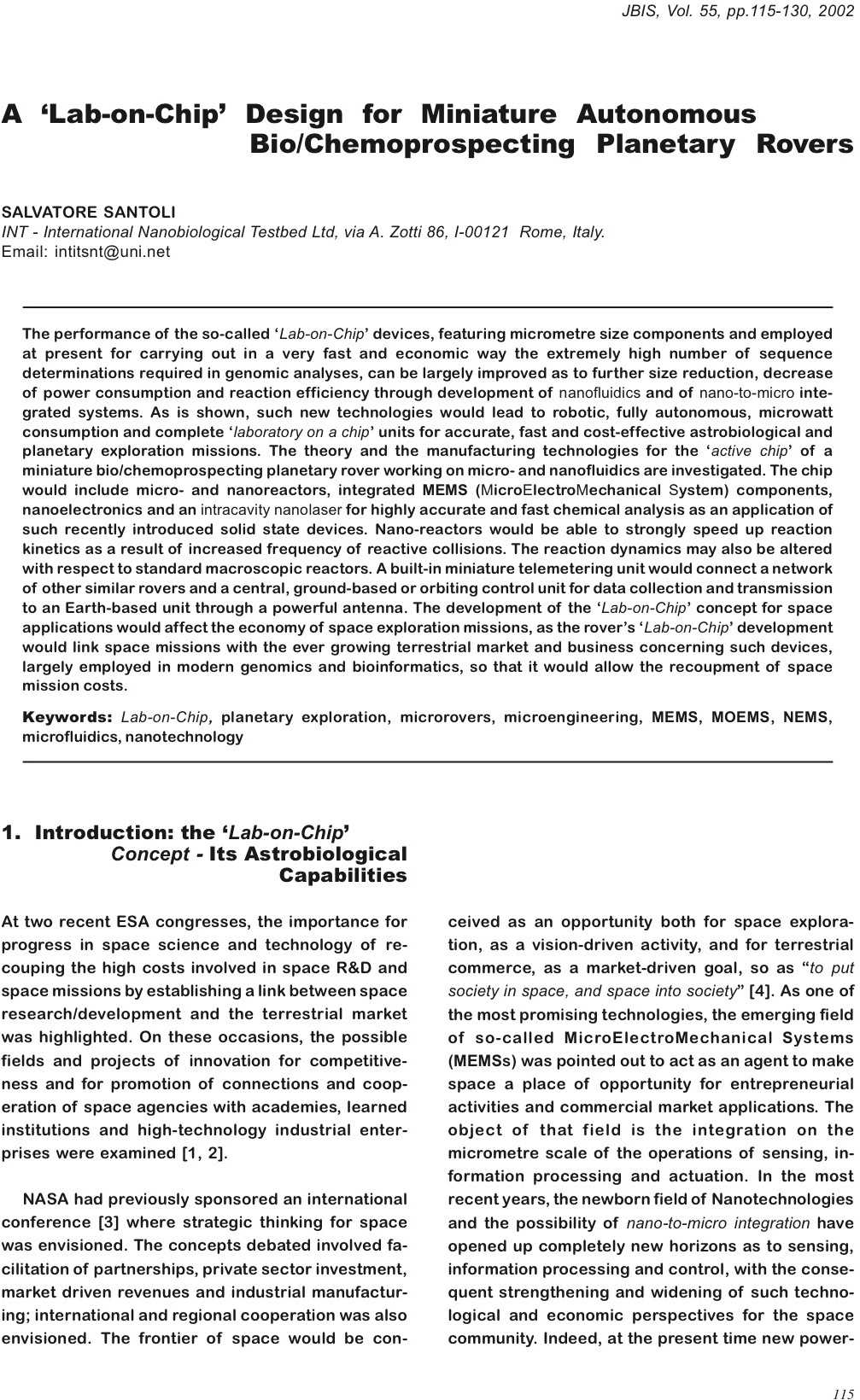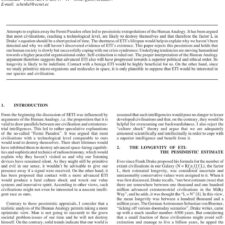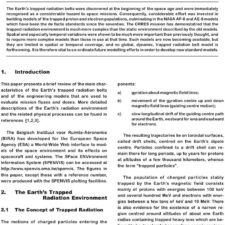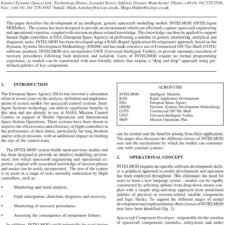A Lab-on-Chip Design for Miniature Autonomous Bio/Chemoprospecting Planetary Rovers
£5.00
S. Santoli (2002), JBIS, 55, 115-130
Refcode: 2002.55.115
Keywords: Lab-on-Chip , planetary exploration, microrovers, microengineering, MEMS , MOEMS , NEMS , microfluidics, nanotechnology
Abstract:
The performance of the so-called ` Lab-on-Chip ‘ devices, featuring micrometre size components and employed at present for carrying out in a very fast and economic way the extremely high number of sequence determinations required in genomic analyses, can be largely improved as to further size reduction, decrease of power consumption and reaction efficiency through development of nanofluidics and of nano-to-micro inte- grated systems. As is shown, such new technologies would lead to robotic, fully autonomous, microwatt consumption and complete ` laboratory on a chip ‘ units for accurate, fast and cost-effective astrobiological and planetary exploration missions. The theory and the manufacturing technologies for the ` active chip ‘ of a miniature bio/chemoprospecting planetary rover working on micro- and nanofluidics are investigated. The chip would include micro- and nanoreactors, integrated MEMS (MicroElectroMechanical System) components, nanoelectronics and an intracavity nanolaser for highly accurate and fast chemical analysis as an application of such recently introduced solid state devices. Nano-reactors would be able to strongly speed up reaction kinetics as a result of increased frequency of reactive collisions. The reaction dynamics may also be altered with respect to standard macroscopic reactors. A built-in miniature telemetering unit would connect a network of other similar rovers and a central, ground-based or orbiting control unit for data collection and transmission to an Earth-based unit through a powerful antenna. The development of the ` Lab-on-Chip ‘ concept for space applications would affect the economy of space exploration missions, as the rover’s ` Lab-on-Chip ‘ development would link space missions with the ever growing terrestrial market and business concerning such devices, largely employed in modern genomics and bioinformatics, so that it would allow the recoupment of space mission costs.





